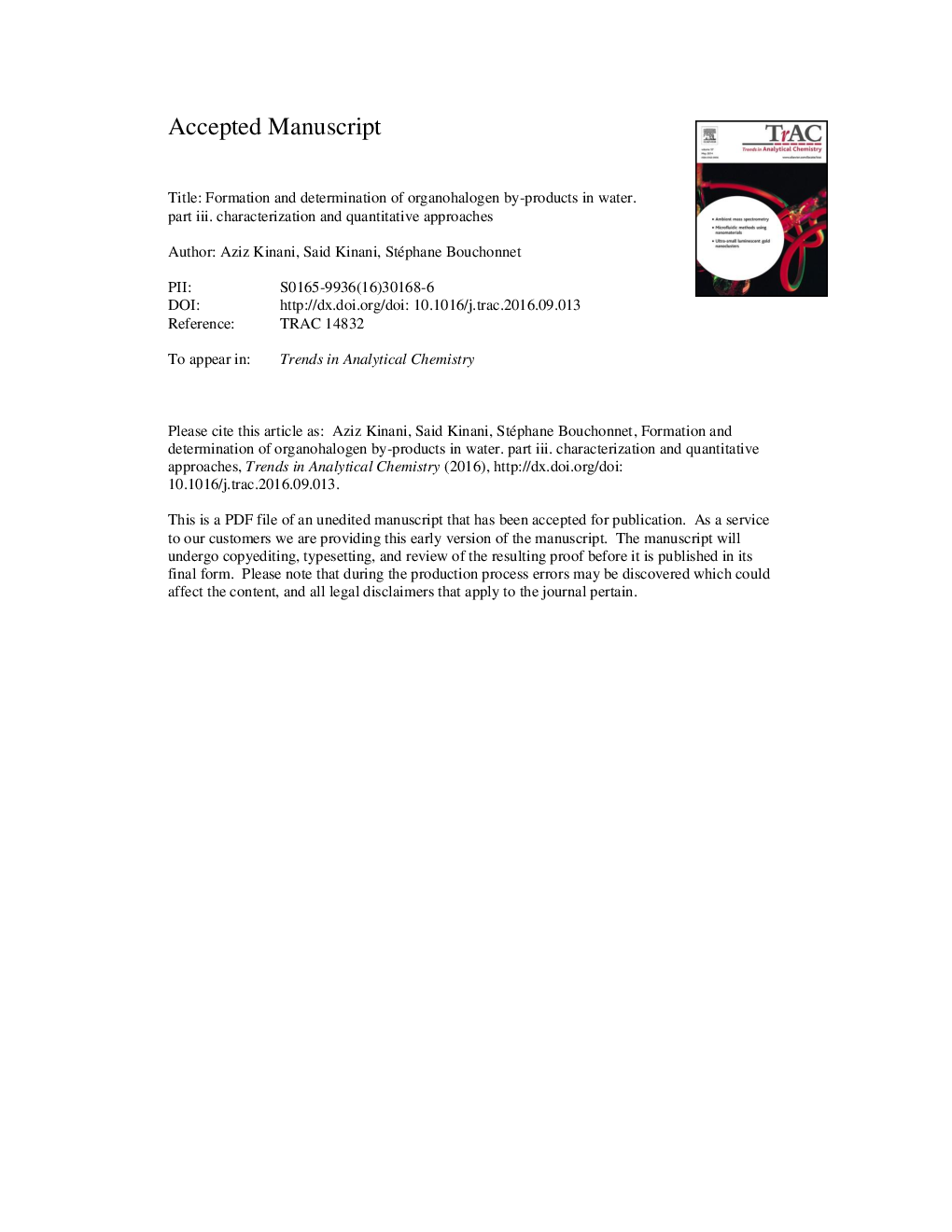| Article ID | Journal | Published Year | Pages | File Type |
|---|---|---|---|---|
| 5141720 | TrAC Trends in Analytical Chemistry | 2016 | 32 Pages |
Abstract
Used as oxidizing biocides, halogen-containing oxidizing agents react with naturally occurring organic matter as well as inorganic compounds, leading to the formation of a wide range of organohalogen by-products (OXBPs). Despite the increase in the number of quantified OXBPs and the improved sensitivity of analytical methods, the mass balance (MB), defined as the percentage of known halides attributed to known, quantified OXBPs divided by the adsorbable organic halide (AOX) values, remains significantly below 100%. As a result, the toxicological and ecotoxicological effects of exposure to OXBPs cannot be assessed precisely. It is crucial to identify new and unknown OXBPs and to increase the scope and sensitivity of the analytical techniques employed. This article aims at providing the reader with a critical overview of the different analytical methods currently employed for OXBP characterization and MB improvement.
Keywords
NLSLPMESPEDNPHAPPIAOXECDPISUPLCDBPsCOCBSTFAFAIMSFTICRMSMIMSMtBSTFAPFBHAField asymmetric ion mobility spectrometryTrihalomethanesSPMEProgrammed temperature vaporizationTHMsCIDHaloacetonitrilesSRMPTVAPCIESINCI2,4-dinitrophenylhydrazineMS/MSN,O-bis(trimethylsilyl)trifluoroacetamideAtmospheric pressure photoionizationWaterElectron capture detectorSolid phase extractionPrecursor ion scanningOrganohalogenSolid phase microextractionLiquid phase microextractionAnalysisCharacterizationcollision induced dissociationDisinfection by-productsMass spectrometryFourier transform ion cyclotron resonance mass spectrometryTandem mass spectrometryheadspaceBy-productsMembrane introduction mass spectrometryMass balanceselected reaction monitoringHansHILICPentafluorobenzylhydroxylamineliquid chromatographyhigh performance liquid chromatographyUltra-performance liquid chromatographyhydrophilic interaction liquid chromatographyHPLCGas chromatographyIon chromatographyelectrospray ionizationelectron ionizationatmospheric pressure chemical ionizationNegative chemical ionization
Related Topics
Physical Sciences and Engineering
Chemistry
Analytical Chemistry
Authors
Aziz Kinani, Said Kinani, Stéphane Bouchonnet,
